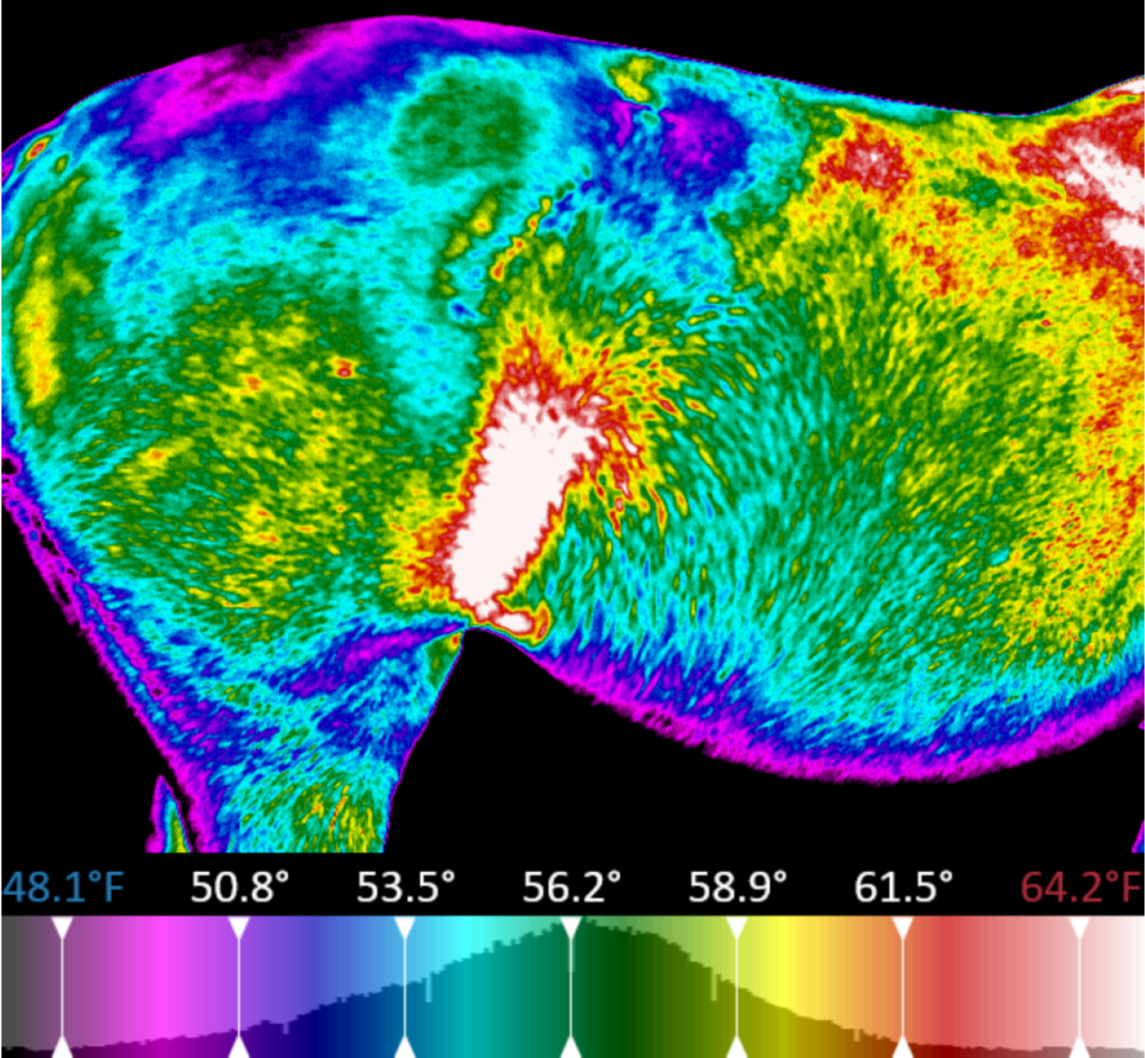Infrared Thermography Correlates with Lactate Concentration in Blood During Race Training in Horses
Abstract: In horse racing the most acceptable way to objectively evaluate adaptation to increased exertion is to measure lactate blood concentration. However, this may be stressful for the horse, therefore, a simple, noninvasive procedure to monitor race progress is desirable.
Forty Thoroughbreds attended race training, with blood samples collected at rest, immediately after, and 30 min after exercise. The lactate concentration was determined 60 s after blood collection using an Accusport®. Thermal imaging of the neck and trunk areas was performed following international veterinary standards from a distance of approximately 2 m from the horse using the same protocol as the blood sampling.
The Spearman rank correlation coefficients (ρ) between the changes in the blood lactate concentration and surface temperature measures were found for the regions of interest. The highest positive correlation coefficients were found in the musculus trapezius pars thoracica region for the maximal temperature (T Max; ρ = 0.83; p < 0.0001), the minimal temperature (T Min; ρ = 0.83; p < 0.0001), and the average temperature (T Aver; ρ = 0.85; p < 0.0001) 30 min after the exercise.
The results showed that infrared thermography may supplement blood measurements to evaluate adaptation to increased workload during race training, however, more research and references values are needed.
Reference: Olga Witkowska-Piłaszewicz, Małgorzata Maśko, Małgorzata Domino , Anna Winnicka.(2020) Animals (Basel). Nov 9;10(11):2072
|
Interested in learning more about thermal imaging? Request a demonstration with Digatherm and discover how veterinary thermography can help you find problem areas faster and easily monitor treatment progress. |

